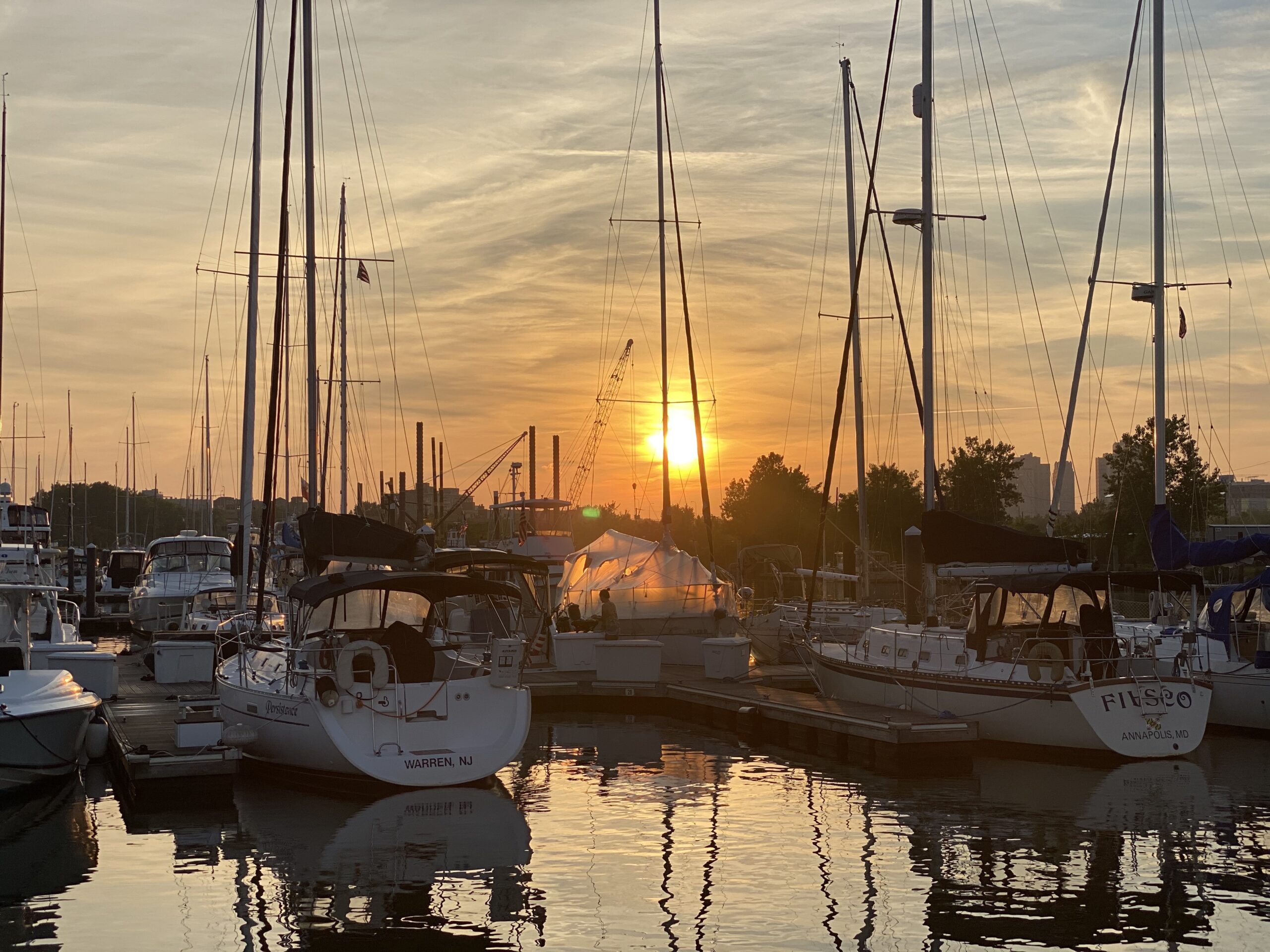How to pick a weather window, prepare your boat, and plan a route for a long passage
The sun’s reflection glitters like crystals on the surface of the water as your vessel’s bow cuts through waves. The feeling is exhilarating, and adventure awaits those willing to put themselves out there and face open water while traveling on a boat. As the skipper, you are responsible for the safety of yourself, your crew, and your vessel during a long passage. Are you prepared to lead the way through a long voyage and into a new port? Read ahead to learn about some important aspects of planning a voyage and how to best prepare for your next passage.
The Vessel
If you take care of your vessel, then she will take care of you and your crew, too. Before undertaking a long voyage, you should complete an inspection of your vessel, especially the motor. Sailors will also need to conduct an inspection of their rigging equipment. These two vessel components are key to reaching your destination safely, and any potential issues should be discovered before casting off the lines.
If its a cabin cruiser, start with the motor by checking the fuel and oil levels. A diesel engine may leak small amounts of oil if it hasn’t been used in some time. Any oil that may be in the oil drip pan from a previous leak should be cleaned. If necessary, change the oil and top up on fuel. Next, the skipper should turn on the motor and run it for 15-30 minutes. While it’s running, inspect the gauges to make sure they’re working properly. As the motor runs, you can inspect the rigging (more on that below), but have your ears tuned to the motor at all times. Your engine should purr continuously, and any sputtering or abnormal sounds may mean the engine requires some servicing.
As for rigging, sailors should visually inspect the whole system, looking for kinks, signs of corrosion, and any other imperfections that may cause the system to fail. Power-driven vessels should be visually inspected as well, from the hull to the onboard lightning protection system (if applicable). All skippers should ensure that their running lights are functioning properly.
The Weather
Mother Nature is the hardest thing to accommodate while planning a voyage as weather is fluid, changing from one moment to the next. You’ll want to select your weather window based on projected wind direction and speed, wave swells and periods, and clear skies (NO THUNDERSTORMS). A wave period is the interval of time it takes for two waves to crash through the same point. Keeping an eye on this is important, for even if the wave height is optimal, the wave period may result in a bumpy ride. Pick your weather window based on your route and heading you’ll need to take to reach your destination.
You’ll want to monitor the weather at your destination as well, watching the projected radar to give you a better understanding of what conditions will be like when you arrive. Some websites that you can use include windy.com and windfinder.com. https://www.surfertoday.com/wave-height-forecast is powered by NOAA data for surfers to keep track of waves over the next week, but sailors can utilize it for their needs as well. As always, stay close to your VHF radio for weather updates from the Coast Guard and/or local authorities.
The Route
Route planning can be one of the most exciting parts of the voyage preparation process as it instructs you on what you may face on the water. Land masses, rocks, obstructions, aids to navigation, and other objects of interest should be studied during route planning. It’s good practice to consult the paper chart along with the electronic ones, which should be downloaded for offline use. Though electronics can plan these routes in a few seconds, a prepared skipper always has paper charts onboard, along with a pencil, compass, parallel ruler, and a divider to measure distances.
Navigation on any passage can be divided into four parts: Departure, Crossing, Arrival, and Mooring. You will likely have different compass headings for the first three parts, which is why it’s important to plan accordingly. Departure will encompass how you will reach the open water, which will vary based on the location of your boat (moored in a bay, tied up in a river or bayou, etc). The Crossing is the majority of the trip, where you will sail across the open water toward your destination. The Arrival consists of exiting the open water and entering the area where you will dock/moor/anchor. Finally, Mooring is how you will secure your boat while you explore the area. Finally, don't leave port with boat insurance. Boat insurance can cover your most precious investment, and give you peace of mind while you are out on the waves.
Executing your plan is never as easy as it seems… roll with it!
Just last week, Marta was preparing for a 30-mile passage to Charleston. The beginning of her weather window hit on Wednesday, but everything seemed to be going wrong at the dock. One of the blocks on her davits broke while she was raising the dinghy and her fuel gauge was stuck at ¾ tank. Then, as she left the dock, four screws got loose on her starboard toe rail--fortunately a quick fix, done underway while her daughter took over at the helm. Despite Marta’s detailed planning, unforeseen challenges occurred that tested her flexibility and patience. However, the experienced skipper values versatility and adaptability and is receptive to their vessel’s needs. You can only plan ahead so much--the true adventure rises from how you react to the unplanned and unforeseen. Plan your route, watch the weather, check your vessel, and then adjust and acclimate to whatever the waves bring your way. Happy adventuring!


